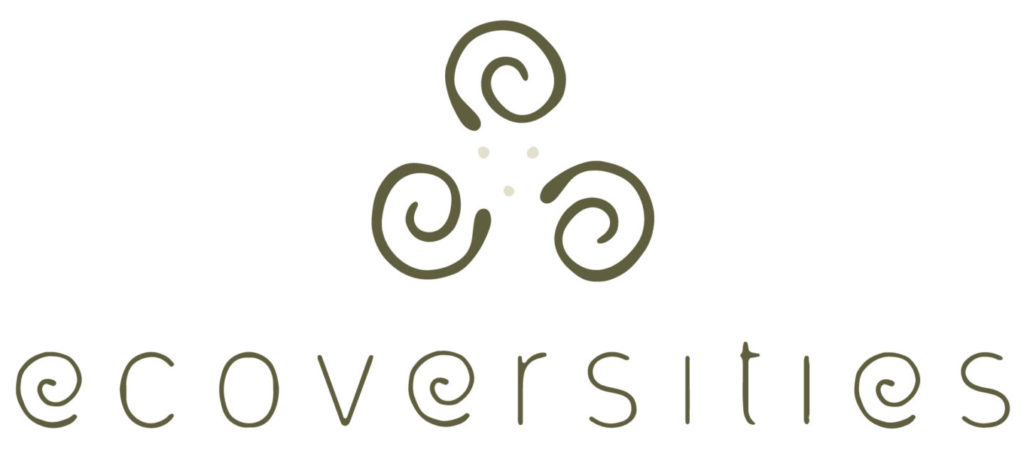by Shane Finan
Introduction
I’ll start with an adage: You can’t see the woods for the trees.
This saying is used to suggest that sometimes what we are looking for is right in front of us. Now I would like to reverse it: We can’t see the trees for the woods.
A complex environment may betray a simpler one, and vice versa. A forest might hide an individual tree. Or if we look closely at a tree, we are introduced to a microcosm of life. Millions of bacteria, fungi, invertebrates, plants, mammals and birds all share this space. We sometimes think of the tree first and the multitude later, or the forest first and the tree later, but each small part is only a section of a more complex picture. Without many symbiotic partners, one or another part of any system might collapse.
This complexity quickly becomes difficult to describe in written language for all but the most thoughtful poets and writers. Others communicate this with art, music, mathematics, dance, circus, storytelling, or many other forms. Through these means, we can try to think with complexity, to approach new pedagogies or methods of learning. Just like the trees and the woods, the process is complex because it is cyclical. Without stories, we can’t understand complexity. Without complexity, we can’t create stories; Rahul Hasija’s thoughtful article on stories on Ecoversities considers the importance of story in more detail. This article will focus on hidden complexity by presenting one story about the technology of transistors.
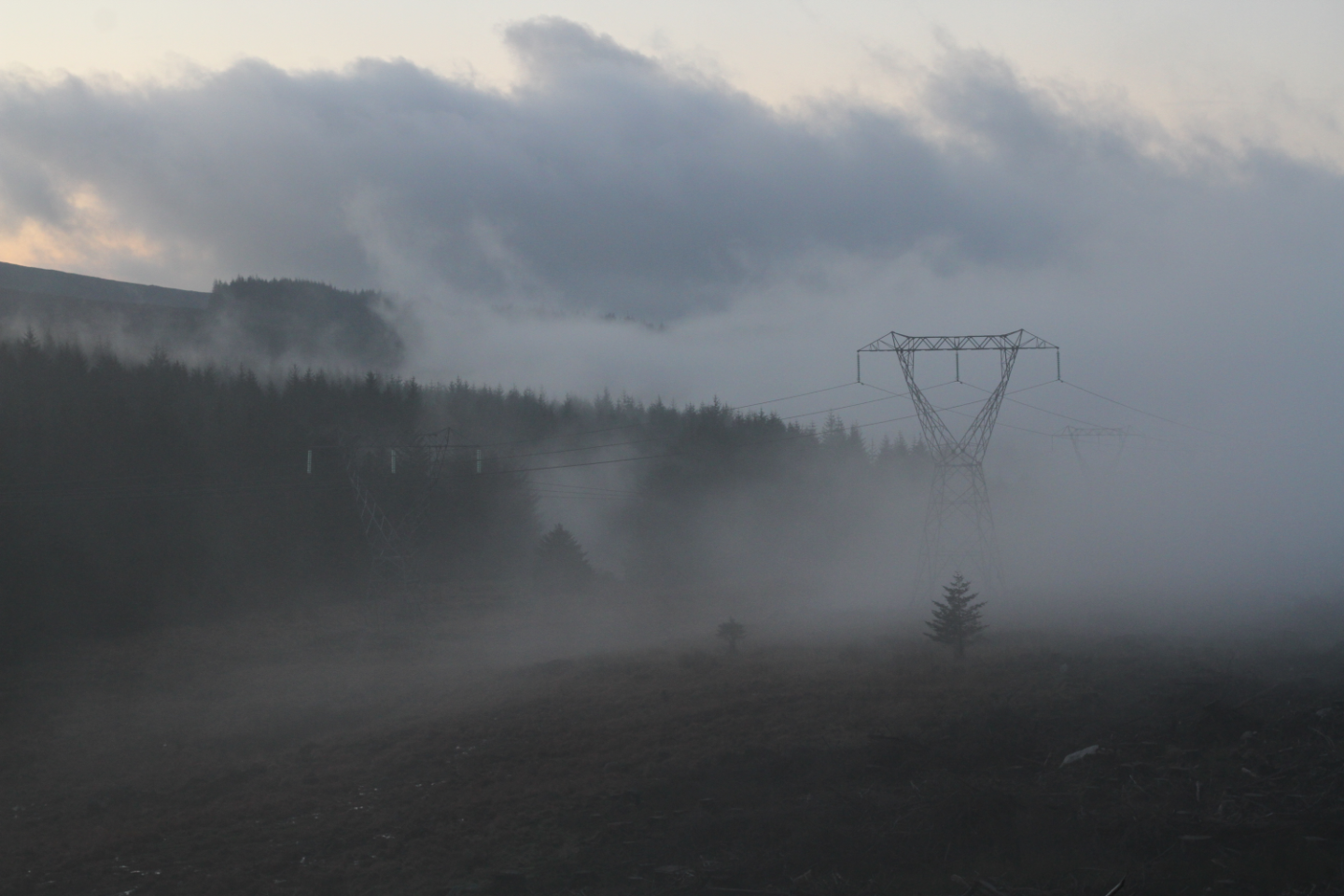
Like ecologies, technologies are complex. The objects that humans use in daily life are varied. The laptop computer that I am interacting with as I write these words is a technology. But so too is the hammer that I used to put together a bench recently. Philosopher Bernard Stiegler described technology as ‘organised inorganic matter’ that transforms over time with social, cultural or environmental change (Stiegler, 1998, p49). Developed in response to an environment, technologies also influence one another, and influence the behaviour of those who use them.
Like trees, a single technology is part of a broader ecosystem, both of other technologies and of other environmental factors like climate and social behaviour. Once the infrastructure becomes particularly complex, it is very difficult to change the process of development. Without the first computer programs and devices of the 1800s, we would not have computers as we know them. Without World War II cryptography, we would not have email and other messaging services. And without the transistor, we certainly would not have scalable modern computers.
So in this article I am going to do three things, taking influence from Michel Foucault’s method of “Archaeology”, describing the hidden complexity of our current technologies as a way to consider how we can improve our use of them. First, I am going to tell the story of the transistor, an object so delicate that it requires other human-made machines to produce it. An object so old that it has taken millions of years of geological change and tidal movements to create its materials. An object so precarious that several unconnected events have led to a shortage of production in the early 2020s that may have an enormous impact on computing culture in the years to come. An object so multitudinous that the smartphone I use every day contains over 400 billion.
This story is designed to consider precarity and complexity in contemporary technology. It will also consider technology as part of the ecological and social landscape that we are all part of. You would not be reading this essay without billions of transistors doing complex work, interacting with fibre-optic cables, electrical circuits, fans and other pieces of equipment. This story will also be told in two ways – here in this essay it is written textually. But I am a visual artist by training and it is through that medium that I expand the story of the transistor, as a linked online artwork (see here).
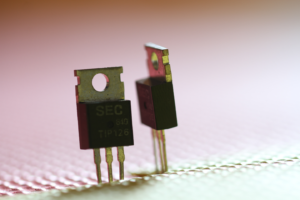
The transistor is a key component of contemporary internet technologies, which I will explore more in the second section. Each technology we use has the potential to negatively impact human and nonhuman lives, and the environment that we all share. I live in Ireland, in the European Union, a part of western Europe that is globally affluent. In this place, it is common for the “throwaway” nature of internet technologies to be paralleled by a thoughtlessness about how we use them. Because of a reliance on advertising and data collection algorithms, one web-page today can contain as much computing code (and as a result, use equivalent energy) as the entire Windows 95 operating system used to start up. Many people in the Global North use online platforms like Facebook and Amazon, which process massive amounts of data at a huge electrical cost in order to provide targetted advertisements. The artist Joana Moll brilliantly visualised the cost of an Amazon search in her project The Hidden Life of an Amazon User (Mol 2017). Newer blockchain-based technologies like cryptocurrencies and Non-Fungible Tokens (NFTs) have had entire power plants built for their operations, spending extraordinary energy to “mine” for something that doesn’t exist tangibly (Dommann, 2020). There is a hunger for faster and faster internet connections, when in many cases the connection speed only allows the bloat of data extraction and analysis without necessarily speeding anything up for the internet user.
Finally, the third section will look at education and communication related to online technologies. The transistor will give an idea of precarity and complexity. The impact of this will give an idea of environmental and social challenges. As a final section, I will explore the Free and Open Source Software movement, and suggest some technologies that might lower the ethical and environmental impact of using technology for education, communication and daily use. To paraphrase the philosopher Donna Haraway, “It matters what thoughts think thoughts” (Haraway, 2016), as we change our technologies based on how we use other technologies.
Transition to the Transistor
As human beings, we like to tinker with the materials around us. We are fortunate enough that this small floating orb we call home has upon and within it millions of diverse objects with which to tinker. Some of those objects have extraordinary properties. Bioluminescent sea creatures can light up waves on late nights. Diverse fungi can devour radioactive materials, drawing them in from the surrounding air and soil. The microbiomes in mammal guts (including our own) can regulate how we eat and control our immunity to different bacteria.
Some of the objects that we interact with are older than the existence of our species. Our geological and elemental companions on this planet are many and are also diverse. Some of them are revered or valued for their hardness, their durability or their beauty. Diamonds, platinum and gold are examples.
Electricity, as it was developed in Europe and north America, uses conductive materials to transfer energy from one point to another. Some of these materials are relatively common. For example, it was found that electricity can move easily in water, the most common liquid on Earth. Other conductive materials must be found and extracted from the ground. Copper is a common conductor and is a useful material for many electrical components.
Silicon, like copper, appears in western science on the periodic table of elements. It is seen as one of the basic building blocks of the universe that has so far been studied at an atomic level. In theory, it is a simple material. However, it is crucial in the construction of most of our modern computing. Its simplicity betrays a complexity.
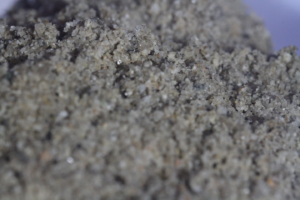 Silicon is typically manufactured for contemporary uses in computing by heating sand. The sand grains are tiny, ground pieces of rock that have become that way through millions of years (although this process can also be sped up by breaking quartz). The sand is heated in furnaces to very high temperatures (above 2200°C) and particles burned off. These particles can later cause problems with flora near the furnaces, creating “Suspended Particulate Matter” that rests on leaves and disrupts photosynthesis, but this is a story for another essay. For now, it’s just important to note that silicon is complicated, found, manipulated, used and manufactured by humans after millions of years of development.
Silicon is typically manufactured for contemporary uses in computing by heating sand. The sand grains are tiny, ground pieces of rock that have become that way through millions of years (although this process can also be sped up by breaking quartz). The sand is heated in furnaces to very high temperatures (above 2200°C) and particles burned off. These particles can later cause problems with flora near the furnaces, creating “Suspended Particulate Matter” that rests on leaves and disrupts photosynthesis, but this is a story for another essay. For now, it’s just important to note that silicon is complicated, found, manipulated, used and manufactured by humans after millions of years of development.
Silicon is what is known as a “Semiconductor” material. Semiconductors are important mainly because their resistance changes with temperature. This allows them to be highly conductive and very small. The MOSFET (metal–oxide–semiconductor field-effect transistor) is the most common transistor in the world, made most often from silicon. Microchips are usually made from these transistors, and microchips are crucial in all contemporary digital devices (Łukasiak, 2010).
Already there are several layers of complexity here, from the geological material (sand) to the mineral (silicon) to its use as a semiconductor (silicon and electricity) to its use in transistors (MOSFETs) to its appearance as a tiny material in a bigger system (microchip). In fact, the complexity has many more layers. For example, microchips are so small and complex that human hands are unable to make them, so machines are built that can handle the minute, microscopic-level work needed to create the microchip. This means that people build machines, which in turn build other smaller machines. And then, of course, there are microchips in action, like those in my laptop or in the device you are using. Transistors support modern internet technologies. Electrical signal is passed into computers. Blocks of code are encrypted and sent through cables and by satellite to different parts of the planet.
Finally, there is another very important layer to this complexity. As with ecosystems, complex supply chains and technological developments are dependent on this complexity remaining stable. We are, at time of writing (early 2022), in the middle of such a collapse. There is a worldwide shortage of transistors. This has happened for complex reasons: A major winter storm in Texas shut down several factories that produce parts from semiconductors in 2018. Then in 2020, the COVID-19 pandemic led to a cascade of problems, including factories having to reduce staff and the slowing of supply chains and shipping worldwide. Simultaneous to all of this, devices that had never before had (or needed) microchips, from radios to refrigerators to cars, had begun to use them in the past 20 years creating an increase in demand. The bottom finally fell out, and already there have been marked increases in the price of digital equipment worldwide, along with long delays in delivering new orders.
Transistors are a crucial and delicate part of a technological ecosystem that every human being reading these words or hearing them through a screen-reader is part of. Transistors helped create this essay. They helped its research. They converted the motion and movement of my fingers and my eyes into symbols on backlit screens. They are as invisible to me as ether, but they are still crucial to what I am writing.
Arguably, the supply chain issues could be very quickly resolved if we removed many of the superfluous transistors from “Internet of Things” (IoT) objects that do not really need them. For example, refrigerators and cars worked perfectly well without sensors and on-board computers for many years but now contain many such devices. The shortage was highlighted recently by the printer and camera company Canon, who released a guide on how to override their own printer cartridges because of a shortage of microchips. And beyond the superfluousness, IoT devices can also hold privacy or ethical risks, introducing potentially sinister monitoring and logging of behaviour (Sicari, 2020; Zuboff, 2015). Devices that can recognise your voice and store preferences are also used to profile your behaviour for the purposes of advertising new products to you. So arguably, there is not a shortage of transistors, but a shortage for objects that need them most.
This problem is in line with the proposals of “slowing down” to meet another major crisis, the climate crisis: Rather than developing new technologies that just gloss over the same problems, perhaps we can just fly less, drive less, grow more of our own food, etc. Arguments have been made that transistors are already so pervasive that they cannot be removed from many areas, such as manufacturing tools. However, this argument presents only one outcome: A continued and increased reliance on one precarious material and object.
How we react to this shortage matters. As humans, as artists or educators, or technology users, we might feel we have limited choices at times. But still, choices exist. In the next section, I will explore internet technologies and how they have come to rely on transistors, and will outline why large corporate technology is putting a strain on this same supply chain.
Internet and Refusal
A friend reminded me recently of the adage “give someone a hammer and every problem will look like a nail”. This saying is used to describe the problems inherent in violent technologies like guns, but also underlines a more subtle point about technology – whatever we use influences our behaviour (Lovink 2017; Stiegler 1998). The researcher Sylvio Lorusso has illustrated the connection between human behaviour and speed of technology, pointing out that we learn how we engage with technologies and that this learning is based on past human behaviours.
We design something, it reflects something back, and a cycle commences. At a certain point, that loop of design can start to shape behaviour (Bialski, Brunton & Bunz 2019). One thing I will not argue is that this is “progress” from one point to another. Technologies evolve, certainly, but they evolve to fit different circumstances. Some of those are environmental, some social, and some are influenced by other technologies. But this does not imply progress necessarily.
Nevertheless, many of us understand technologies to be only those that are most recently invented and most complex in their mechanisms. The seeming simplicity of reading or hearing these words disguises layers of complexity that bring one message from my computer to the Ecoversities website to your computer. In between are requests for data transfer, conversions of data, encryptions of those data, transfers from one place to another by satellite, fibre-optic, or other means, and finally local storage and access on a device. My device to your device needs some very particular interactions, and most of those interactions are controlled by and operated through transistors.
In the next section, I will explore some recent theory and research into technologies that are collaborations between humans and animals, humans and birds, or humans and fungi or slime moulds. There is still a lot to learn in that environment, and the ideas are as new as they are exciting. But first I consider how we can react in practical, current terms, through refusal. This may seem difficult while our devices are still tied to transistors and contemporary internet technologies, but there are small acts that can have an effect on personal behaviour as well as community engagement with technology.
In late 2021, I became a father. The new human being that has joined us has given me and my partner a wonderful gift, one that we will work our lives to repay. Already, we are learning from them, being introduced to a new way of seeing, or re-learning (and un-learning) an old. One of the first acts that I was expected to do in this contemporary world, when this child first arrived, was to send a photograph to friends and family by smartphone. Compressing the image of the child into millions of minute pieces of electronic data, their image would be broadcast to many places around the earth.
My first act in this was refusal. I took a non-identifying photograph of the hands of the three loving people: mother, father and child. I sent this out on WhatsApp (a platform owned by social media company Facebook/Meta) with an explanation that I would not be sending any photographs with recognisable faces to any account that tracks and stores this data for advertising purposes. This is not a choice I am willing to make for my child – they can make a choice later in life about what to share, and how.
I expected some fight, some objection. Instead, several friends joined or chose more secure, non-corporate messaging services almost immediately, just to see the photographs. A simple act of refusal became an act of collaborative resistance. I still use WhatsApp but have alternatives, most prominently email (not Gmail) for secure communication. As written in another Ecoversities paper by Kaushiek Pranoo, “If you use a digital product that seems free, then most probably, YOU have become their product/fee”. This is only partly true – there are many open source, free digital technologies that do not track usage (I am, for example, typing this essay on LibreOffice, a free and open source word processing software). However, the sentiment is important, and the act of refusal is not allowing my child to become a product without their choosing. Whether I have managed to keep this information or data from the prying eyes of automated algorithms is difficult to determine, but is not the most important aspect of this act. More important is how the act of refusal immediately made several people think about the services they are already using.
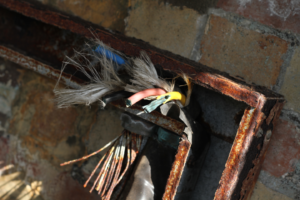
Refusal to contribute data to large corporate web services is one option. Later in this text, I include a short description of how to find alternatives to most environmentally, socially or ethically unsound digital platforms. However, as much as I advocate conscious use of technology, it is hard to refuse to participate in any digital realm at all. As educators, artists, writers, or anyone involved in decolonising or relearning, the tools we use determine the messages we spread.
The infrastructure that underlies our technologies is not as easily refused. The internet infrastructure is made up of fibre-optic cables, satellites and other machinery involved in transmitting information from one place to another. Regardless of what technologies we use, this infrastructure is owned by states or companies, so poses a challenge to any form of technological sovereignty. However, there are existing examples of communities that have built mesh networks in places as far apart from one another as Uganda, Vietnam, and Germany (Lertsinsrubtavee et al, 2015). These locally-owned networks still require an access point to be part of a “world-wide web”, but can be used locally as community networks that are digitally enabled. This offers an example of using hardware that is community-controlled, but as seen in the last section, the materials used are still subject to processes of extraction and manufacture that are outside of local control.
You may notice that we have stumbled into postcolonial problems that are common in many areas of contemporary study, not just computing. While we analyse how colonialism is embedded in education, social services, environmental issues and other areas, technology is often overlooked. The researcher Timnit Gebru was recently at the centre of a scandal after she published a paper on the inherent white, male, Californian perspectives embedded in Google’s computing systems while working for the company. Google is not alone in being called out for the weighting of these voices that underpin both their code and their user-base. Even non-commercial platforms like Wikipedia have been criticised, with little sign of this toxicity reducing.
Our technologies are built with the flaws of how we see the world embedded within them. After the last 200 years of computing technology development, we have created systems that carry the flaws of embedded behaviours from western history. While many of these technologies have improved lives, they have also led to new and different problems. As Paul Virilio suggested, each technology comes with its own advances and its own hidden problems that manifest when we begin to use them (Virilio, 2007 #246). Sometimes the developments have unforseen consequences, such as in farming, where many 20th Century technological developments led to the erosion of soil and an over-reliance on chemicals to meet high food demands on exhausted resources. Our knowledge structures are built from previous ideas, and these are often flawed, as has been pointed out in philosophy and research in recent years (Despret 2016; Liboiron 2021).
Simultaneous to the problems of embedded bias, there are environmental impacts to using resource-heavy technologies. The current debate around the energy use of blockchain technologies is worth having, but it betrays an assumption that web technologies are not already highly inefficient. Many web technologies that rely on advertising as a business model, process large amounts of data about individual users to generate customised advertisements. Since web 2.0, server requests can be made while on a website; this is what makes it possible for Facebook or Twitter to load notifications without refreshing the website. But this also means connections that are always open, and code that is run repeatedly. Every block of code comes with an energy cost.
Within this internet, there are possibilities for refusal, and there are also new ways that people are developing technologies that seek new directions, away from these embedded models. To conclude this essay, I will explore some of these and also offer possibilities for people seeking to use technology while refusing the social or ethical problems this may present.
A More-Than-Human Techno-ecology
There is always another technology, and that technology is often revealed through refusal.. Examples like those in the last section include mostly commercial platforms that process large amounts of data for advertising without thought given to the social or environmental problems this creates.
Finding alternatives, however, is not easy for everyone. There are online lists that you can follow, for example this one created and maintained by ethical.net, and the excellent article Design Options for Sustainable Software and Hardware in Branch magazine goes into more detail on the environmental impacts of technology and data in general. There are ways to get more involved with communities of like-minded people (by using noncommercial social media platforms like Mastodon or Scuttlebutt, for example). Free and Open Source Software (FOSS) are technologies that are built and maintained by communities online (Mansoux & Abbing, 2020). In many cases they may be less user-friendly than commercial software, which is understandable as they do not have the international reach or considerable public and private funding that companies like Google or Microsoft have. Using open source technologies can be a method of refusal, which is pedagogical insofar as it adjusts the methodology of using our technologies enough that we critique our platforms.
Refusal is one method of creating new futures or ways of working, and has been used as an effective way to critique current postcolonial structures. The 2020-21 transmediale festival in Berlin and online, explored this in depth, offering artworks and theory on refusal as a method of altering perception. Their theme included how ‘Often overlooked or under-considered, quotidian practices of refusal manifest within the constraints of everyday life.’
I would note at this point that I am not trying to appear virtuous or to suggest that I never use commercial platforms. Nor would I suggest that FOSS technologies are without their own social or environmental issues. They have many issues, but one of the advantages is that these issues can be flagged and addressed by the community. And the act of refusal is useful but doesn’t need to be totalising. In other areas of my life, I try to refuse bad practice, but I drive a van as part of my work, and accept that my burning of fossil fuels is something I need to do sometimes when living in a rural area. However, within this I try to drive as little as possible, to cycle more, to offer lifts to other people or to transport objects for neighbours, reducing the overall amount of driving that is done. I adopt a similar attitude with online media: A refusal can be partial.
A refusal of some networks is one way to create new technological ecologies. This is something active that can be done by any internet user today. These refusals are a beginning in a longer process of ethical positioning that can, potentially, force technological development to change direction. While blockchain technologies and quantum computing continue to receive headlines in the world of advanced technology, I will use the final section of this essay to consider some of the weirder ideas that queer and challenge technology, and that could potentially form part of future ecologies of technology.
Researchers, artists, farmers, technologists and designers have already considered more-than-human making-with for a long time. In the 1970s, pigeons were trained to help the US coast guard find ship wreckage. The birds pecked panels depending on what they saw, and were flown in a unit attached to the bottom of a coast guard helicopter as spotters. Their keen eyes were more efficient at spotting flotsam than human or digital devices (with over 90% accuracy recorded).
The Unconventional Computing Laboratory at the University of the West of England, Bristol build technologies that are often known as “biocomputers”, using living material like slime mould, fungi and DNA to perform computations. These are not designed to replace digital computing, but to experiment with what we could learn if we build with organic material rather than what Stiegler regarded as technics: “organised inorganic matter”. One of the professors, Andrew Adamatzky, when asked about the practical applications during an event with the Serpentine Galleries, stated that it is not necessarily about building something, but about understanding: “If you manage to understand their language and communicate with them, then our world will become better.”
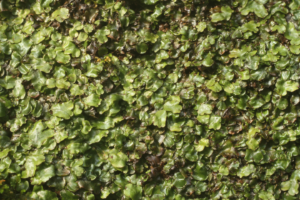
Beyond experimental creativity with fungi and moulds, theorists and practitioners have also studied and collaborated with mammals and birds. The philosopher Vinciane Despret has pointed out many of the flaws in how western scientists have observed animal behaviour, showing how our prejudices as humans have guided laboratory experiments (Despret, 2016). She uses examples such as how scientists set up tests by starving animals and then forcing them to compete for food, and use the results to prove that the animals are competitive in their nature. Poet Alexis Pauline Gumbs takes this mistreatment of animals (in particular marine mammals) and applies it to postcolonial theory, positing that violence is embedded in the practice of how we see and interact with one another, from the human to the more-than-human. In her book Undrowned, she presents a dreamlike world of her own personal world intertwined with that of the mammals that have suffered through human technological and colonial actions, offering readers a chance to meditate on body, action, and interconnectivity between animal and human (Gumbs, 2020).
Others have found ways to collaborate with farm animals as part of their design or artistic practice. Anne Galloway (More Than Human Lab, New Zealand) and Jocelyne Porcher (Institut national de la recherche agronomique, France) incorporate sheep and pigs respectively into their design practices. Their more-than-human practices present ways of making-with farm animals that try to pull away from human-centred design. Porcher’s work has included showing how animals are not just inanimate actors in the work of humans, but are active contributors to the process. As Porcher highlights, very much in keeping with this article, if a cow refuses to work, then a farmer’s work will not get done without either patience or mistreatment. This is a simple reminder that human beings are not the only actors in the complex arrangements that we perceive as solely human, and that refusal has many facets.
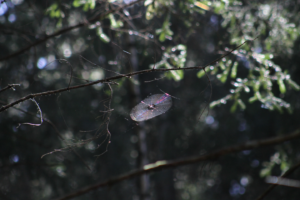
More-than-human making-with is experimental and is difficult to discern whether or not this type of experimentation, design, writing, theory or artistic practice can be described as “technological”. The iterative process of working with nonhuman collaborators presents possibilities for a type of technics that defies Stiegler’s definition mentioned above, and instead presents ‘organised organic matter’ as a possible candidate for technological or social engagement.
Arguably, the distinction between organic and inorganic is flawed in the first place, as there is so often a desire to hide the human from the natural, or to hide the nonhuman in technological progress. As processes engage more and more with nonhuman collaborators, this dichotomy becomes hard to reconcile. This difficult reconciliation is brilliantly presented by ecologist David Haskell in his book The Forest Unseen. The book is a documentation of Haskell’s revisiting the same square metre of forest over the course of a year. Each time he describes what he finds. One day he finds a golf ball, and descends into a difficult argument with himself about why this foreign object disturbs him so much more than a chestnut or an animal dropping might. He concludes that “to love nature and to hate humanity is illogical. Humanity is part of the whole…” (Haskell, 2013).
Our current technologies offer us so much, and have developed for a long time with tangential evolutions. They may be flawed, but they are often brilliant. However, they should not be revered. This, really, is where my final thoughts lie. We should not be resigned to a specific tool or idea, or to a specific way of thinking. Transistors have offered a particular type of computing, but have also led to a particular type of technological development that has become problematic due to over-reliance. Now with a transistor shortage, we have no backup.
The tree in the forest or the transistor in the smartphone have things in common, just as the bacteria in the leaf and the silicon in the semiconductor do. Where our technologies go to next is unpredictable, but we do have the option to choose our technologies just as we can choose our actions in daily life.
As educators, artists, facilitators or idea-makers, these choices can make all the difference. By even making the choice to embrace the complexity of a technological ecosystem, we begin a pedagogical journey into a complex understanding of many different systems and accept that there are no hegemonies. This alone is a worthwhile activity.
Shane Finan assembles objects into artworks and develops collaborative projects. His work is based in rural environments and examines the role of contemporary technology on nonhuman and human behaviours. He always collaborates, most recently working with ecologists, sheep, fungi, epidemiologists, artists, historians and bacteria.
Trained in fine art (IT Sligo, 2008) with a focus on painting, he completed an MSc in interactive digital media (Trinity College Dublin, 2013). He has won awards from the Arts Council of Ireland (2012, 2020, 2021), Culture Ireland (2018, 2021), Wicklow Arts Office (2021, 2022) and Creative Europe Ireland (2020). His work has recently exhibited in Ireland, the UK, Norway, Greece, Austria and Slovakia.
Acknowledgements
There is never enough space to acknowledge all the human and nonhuman voices that are present in a piece of writing or an artwork. However I would like to mention a few.
Thank you to the team and editors at Ecoversities, in particular Vu and sierra who brought this to publication. For the many conversations and revelations that are visible and invisible in this article, I acknowledge my fellow fungi in “Kinship Group 26”: Loes Damhof, Craig Slee and Stefanie Wenner. For the considerations on fungi and trees I am grateful to the teams at the project ENTWINED, run by VARC (UK) and partnered with Kielderhead Wildwood Project, Northumberland Wildlife Trust, where I was artist in residence in 2021. For the thoughts on animals and care I learned with and through the farmers, researchers and artists that I met while working on the project FIELD (UK). My online communities, particularly on Mastodon and Scuttlebutt, and my offline ones in art, research and family circles are all here in these words. And Amy, always, for everything, and Mella, now always too.
Bibliography
Bialski, P., Brunton, F., & Bunz, M. (2019). Communication. Minneapolis, London: Meson Press, University of Minnesota Press.
Despret, Vinciane. What would animals say if we asked the right questions?. Vol. 38. U of Minnesota Press, 2016.
Dommann, M., Rickli, H., & Stadler, M. (2020). Data centers: edges of a wired nation: Lars Müller Publishers.
Gumbs, A. P. (2020). Undrowned: Black feminist lessons from marine mammals.
Haraway, D. J. (2016). Staying with the trouble: Making kin in the Chthulucene: Duke University Press.
Haskell, D. G. (2013). The forest unseen: A year’s watch in nature: Penguin Group USA.
Lertsinsrubtavee, A., Wang, L., Sathiaseelan, A., Crowcroft, J., Weshsuwannarugs, N., Tunpan, A., & Kanchanasut, K. (2015, November). Understanding internet usage and network locality in a rural community wireless mesh network. In Proceedings of the Asian Internet Engineering Conference (pp. 17-24).
Liboiron, Max. “Pollution is colonialism.” Pollution Is Colonialism. Duke University Press, 2021.
Lovink, Geert (2017). Social media abyss: Critical Internet cultures and the force of negation. John Wiley & Sons.
Łukasiak, L., & Jakubowski, A. (2010). History of semiconductors. Journal of Telecommunications and information technology, 3-9.
Mansoux, A., & Abbing, R. R. (2020). Seven Theses on the Fediverse and the Becoming of FLOSS. In K. a. L. Gansing, Inga (Ed.), The Eternal Network: The Ends and Becomings of Network Culture (pp. 124-141). Amsterdam and Berlin: Institute of Network Cultures, Amsterdam, and transmediale e.V., Berlin, 2020.
Mol, Joana (2019). The Hidden Life of an Amazon User, European Media Art Platforms EMARE program at IMPAKT, online artwork https://www.janavirgin.com/AMZ/, accessed 19/04/2022
Sicari, S., Rizzardi, A., & Coen-Porisini, A. (2020). 5G In the internet of things era: An overview on security and privacy challenges. Computer Networks, 179, 107345.
Stiegler, B. (1998). Technics and time: The fault of Epimetheus (Vol. 1): Stanford University Press.
Virilio, P. (2007). The original accident: Polity.
Zuboff, S. (2015). Big other: surveillance capitalism and the prospects of an information civilization. Journal of information technology, 30(1), 75-89.
